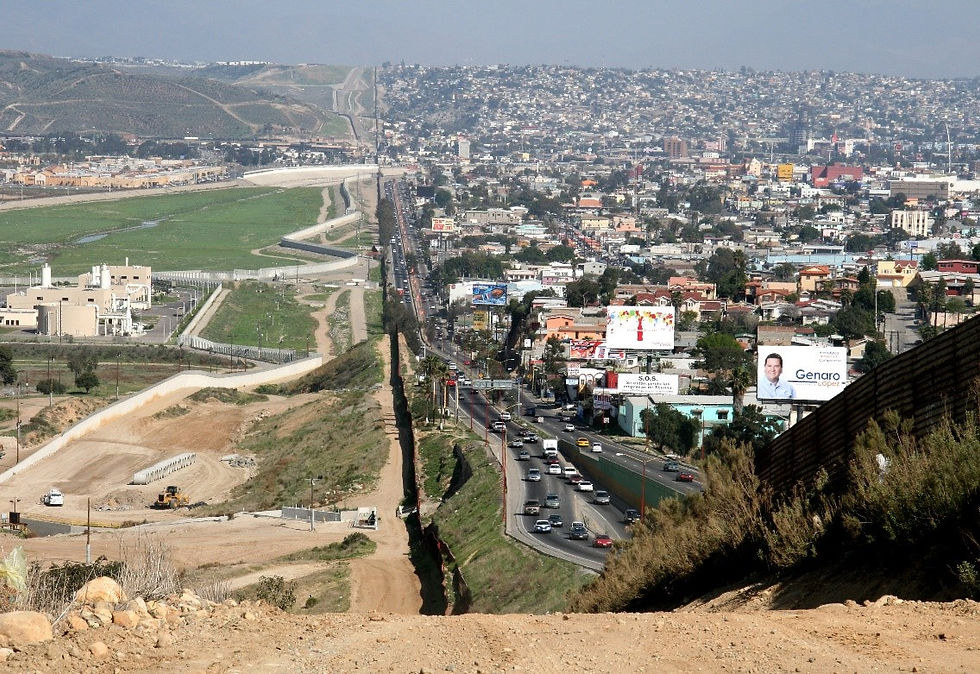The Borders of Public Policy
- JIPS

- May 24, 2017
- 3 min read
By Mateo Villamizar Chaparro | May 24, 2017

We cross borders every day. Some of them are clearly visible while others are more delicate. On your way to work or school, the reader might have passed from one municipality to another, from a country to another or even from a public to a private space. However, along with you, other things were being altered from place to place. Notably, the policies implemented by governments at the state, municipal, or urban level, evidencing a clear geographical pattern in the elaboration of public policy.
Asking how policy changes drastically due to a border should be one of the pressing questions in a world that claims to be moving toward a borderless and transnational future. There has been a debate surrounding the discipline of human geography and their possible effects on aiding the formulation of public policy. Many recent studies focus more on the effects of the postmodern and cultural turn in policy analysis, as well as overemphasizing the theoretical over practical issues. The intellectual bias against policy studies makes the dialogue arduous but not impossible. On the other hand, scholars of public policy are more practical and data oriented, which also can make interdisciplinary communication more difficult.
Despite this, geography has been very influential in certain areas of public policy. Not only by sharing methods related to remote sensing and GIS to those scholars who analyze and evaluate public policy, but also in providing some theoretical frameworks for understanding some transportation, immigration and trade issues. For example, certain infrastructure policies tend to involve a wide array of geographical units in order for them to work. Another example is the existence of metropolitan areas where different municipalities come together to respond to issues that affect them. Some positive outcomes of this are the connections between circuitous transportation systems or the calibration of taxing schemes to producers. However, similar experiments at social policies in a local perspective are harder to find.
On some occasions, policymakers rarely analyze and often avoid the study what happens at the borders of their geographical units. Competing jurisdictions and sovereignty concerns that arise when crossing borders make the task of generating public policy troublesome. In fact, to borrow the idea presented by Reveil Netz in his book Barbed Wire, borders act as tools that prevent motion. In this case, they might prevent the movement of services, policies and goods to areas that might be contiguous but lie in different parts of an imaginary line. Furthermore, what brings an additional layer of difficulty is that usually borders are areas of interaction. Hence, this interaction between zones can lead to a differential demand of services that can generate complications for an adequate provision of public goods.
Public policy often has clearly defined geographical boundaries, and the problems it may try to understand may change drastically as we cross a border from one place to another. The boundaries set by municipalities, cities or states are just imaginary lines that determine who can benefit from the effects of a wide gamut of policies. Hence, we might find a geographical mismatch between similar problems and the solutions used by different levels of government. Specifically, this is because the limits that are preventing a positive overlap of policy that can be mutually beneficial are political in nature and require a whole new level of academic complexity to its study. The key question for the future is what is the proper unit of analysis for public policy that transcends borders. Ultimately, policy makers and academics will decide how borderless they want the world to be.

Mateo Villamizar Chaparro is a Colombian student doing the Master of International Affairs at GPS. Prior to that, Mateo pursued studies in Economics and Political Science. His research interests revolve around methodology, political institutions and human geography. He is the current Managing Director of JIPS.
References:
Martin, R. (2001). Geography and public policy: the case of the missing agenda. Progress in Human Geography, 25(2), 189–210.
Netz, R. (2009). Barbed Wire: An Ecology of Modernity (Edición: 1). Wesleyan Univ Pr.
Nevins, J. (2002). Operation Gatekeeper: The Rise of the “illegal Alien” and the Making of the U.S.-Mexico Boundary. Psychology Press







Comments